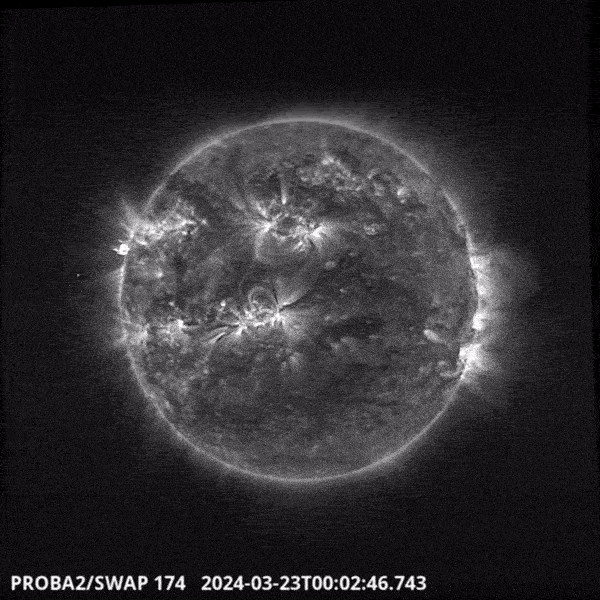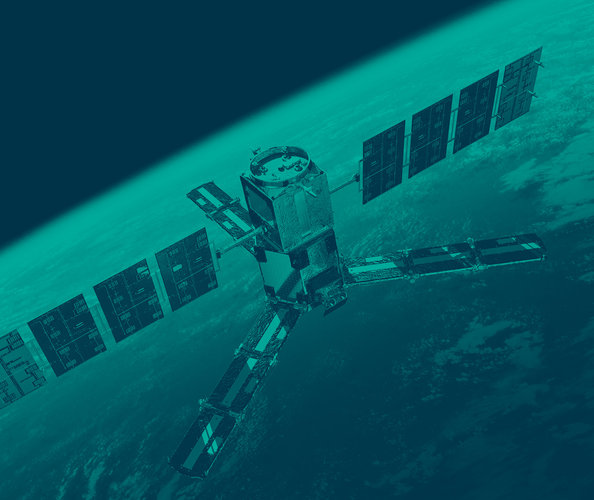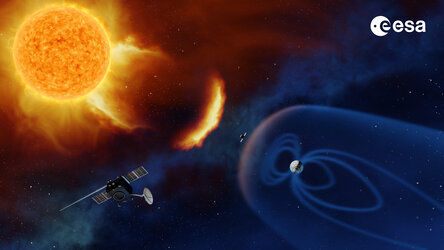SMOS and Swarm team up to spot huge solar storm
The Sun erupted over the weekend, flinging electromagnetic radiation towards Earth, even illuminating skies with spectacular aurora borealis. For the first time, ESA’s unlikely space weather duo of SMOS and Swarm tracked the severe solar storm — which warped Earth’s magnetic field.
Space weather – electromagnetic radiation and particles emitted by the Sun in the form of solar flares and coronal mass ejections (CMEs) — can both dazzle and destroy. It can cause awe-inspiring auroras, but can also take out satellites, communications and even power grids.
Early on Saturday 23 March 2024, the Sun released a strong X1.1 solar flare, the most powerful possible type, from a particularly active region pointing directly towards Earth.
The news of an associated coronal mass ejection (CME), heading right at us, put aurora-chasers and space weather scientists alike on high alert.
For Swarm scientists monitoring Earth’s magnetic field, it was the perfect chance to put the three-satellite constellation’s new near-real time data to good use.
Each Swarm satellite carries a magnetometer to measure the strength of Earth’s magnetic field. This magnetic field is constantly changing and responds particularly strongly to space weather events.
The CME arrived far sooner than expected, causing a geomagnetic storm reaching severe levels on the afternoon of Sunday 24 March.
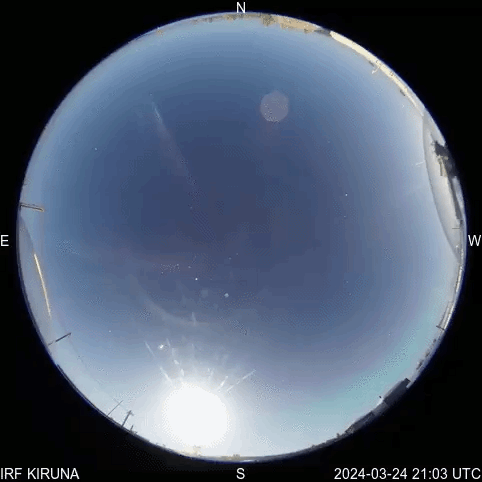
As the data quickly became available, Swarm Alpha was the first of the low Earth orbiting satellites to measure changes in Earth’s magnetic field, as reported by Eelco Doornbos from the Royal Netherlands Meteorological Institute (KNMI).
Swarm Bravo soon provided another perspective, showing large changes to Earth’s magnetic field which reached lower latitudes during its peak.
Whilst the storm was relatively short-lived, the disturbance to Earth’s magnetic field was incredibly strong, and the impacts are still being analysed.
According to ESA’s Space Weather office, the active region of the Sun responsible has been releasing further M-class flares, not quite as strong, ever since — and there’s a 40% chance of a further X-class flare in the coming days.
SMOS flaring up
Surprisingly, ESA’s Soil Moisture and Ocean Salinity (SMOS) satellite was amongst the first in line to capture the solar radio burst associated with the solar flare.
The main instrument of SMOS is an interferometer radiometer known as Miras, which normally detects ‘L-band’ radio waves emitted from Earth. This allows us to measure geophysical parameters like soil moisture, sea surface salinity and sea ice thickness.
Due to its position in orbit, however, SMOS’s antenna also has the Sun in its field of view - and solar flares also release radio waves.
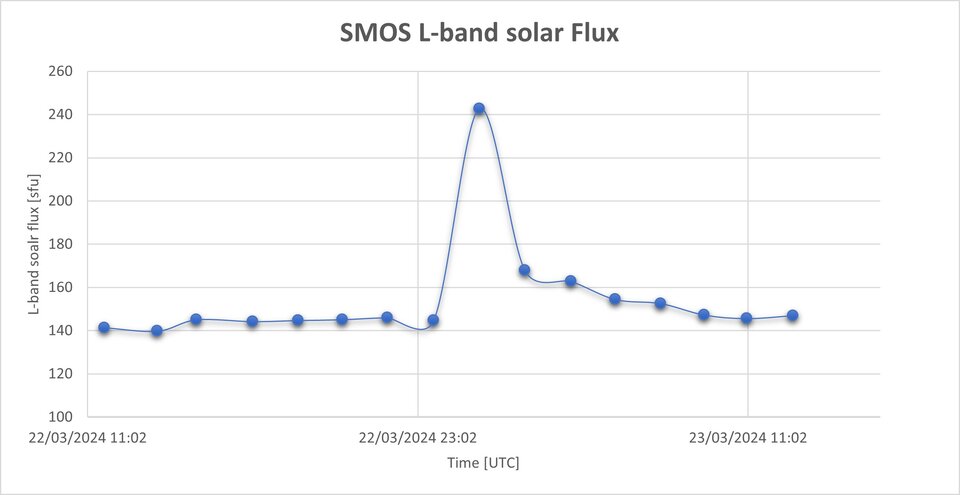
For Earth observation, these signals are removed as noise. But space weather scientists had other ideas. With almost 24-hour near-real time monitoring of the Sun, SMOS can detect effects of solar flares on the global navigation satellite system (GNSS), as well as flight radar and L-band communications.
Having this near-real time information is very useful. Following a particularly strong solar flare in December 2023, a number of satellites lost GPS contact with ground stations in South America. SMOS was able to narrow down the cause, linking it to the solar event.
“After 14 years, SMOS still has plenty more tricks up its sleeve,” says Klaus Scipal, SMOS Mission Manager. “Its versatility, like that of all the Earth Explorers, is hugely impressive and its continued potential for space weather monitoring is very exciting indeed.”
Swarm hot on the lead
When a CME hits Earth’s magnetosphere, we can see the effects as auroras lighting up the polar skies. The Swarm satellites, meanwhile, register the warping of Earth’s magnetic field. We tend to see a much stronger magnetic field high above the poles, and a significant weakening at the equator.
While the solar flare of 23 March — and the associated solar storm on 24 March — was a strong one, it’s not always the case that there will be a big geomagnetic storm on Earth.
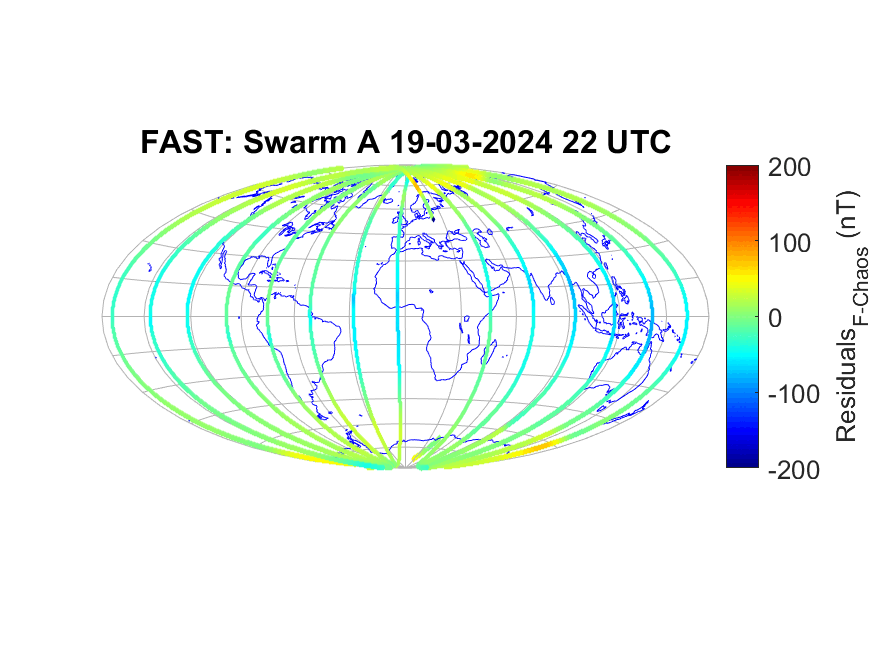
Not every large solar flare is associated with a significant CME, not every CME will hit Earth directly, and even when they do, the effects vary.
What the Swarm satellites detect depends on many factors, such as energy, solar magnetic field orientation, and how many charged particles enter Earth’s atmosphere over the poles.
It’s something we still have a lot to learn about - and why this new space weather duo is handy for scientists working to understand what goes on between the Sun and Earth.
“It is great that we can now see –in near-real time– the merged information from SMOS and Swarm,” says Swarm Mission Manager Anja Strømme. “It’s exciting, particularly during the most active part of the solar cycle, to see what we might discover thanks to these complementary observations.”
Earth Explorers show their versatility
The SMOS and Swarm missions are part of ESA’s Earth Explorer family. These satellites are flying laboratories that test out groundbreaking new Earth observation technologies.
Both missions have lasted far beyond their initial brief, with data continuing to prove integral to daily life. SMOS data, for example, are used in hurricane forecasting, while Swarm data help your smartphone pinpoint north.
This latest advancement marks another impressive, and timely, addition to the portfolio of both missions.
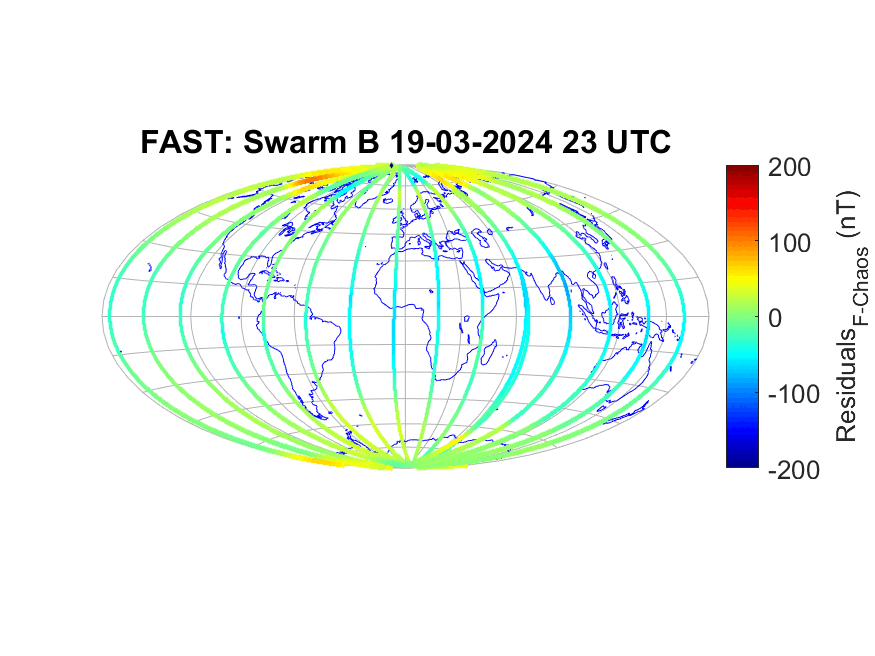
The Sun, which goes through peaks and troughs of activity, is currently ramping up to its ‘solar maximum’ in 2025. That means we’re likely to see stronger solar flares, and more regular bouts of space weather in the months to come.
With SMOS directly detecting what happens on the Sun, giving advance warning of GNSS disruption, and Swarm providing complementary data about what happens closer to home, we have a unique new perspective on the effect of space weather on Earth.
“Space weather may well originate outside our planet, but outages to navigation and power show it can have potentially hazardous effects here on Earth,” says ESA’s Director of Earth Observation Programmes, Simonetta Cheli.
“It’s exciting therefore to see two of our Earth Explorer missions combining to monitor solar events and to better understand how they affect our planet. It once again demonstrates the versatility and excellence of Europe’s Earth observation programmes.”
Staying vigilant
Monitoring space weather is a key activity of ESA’s Space Safety Programme, which is soon to be bolstered by ESA’s Vigil mission.
Vigil, which is due for launch in 2031, will monitor the side of the Sun, spotting areas of potentially hazardous solar activity before they rotate into view of Earth.
Vigil provides the first 24/7 operational data from deep space by ESA, increasing the advance warning of key space weather effects from 12-18 hours up to four to five days in advance. It will allow us to be much more prepared for hazardous solar events, including potentially destructive geomagnetic storms.
It will also give us a lot more information about just what may be heading our way.
We might have to wait a while for the results to come in. As Vigil is taking up a position 150 million km behind Earth, it’ll take 26 months after launch for any data to start coming in.
But when it does, along with the information gleaned from Swarm and SMOS, we’ll be better equipped than ever to understand the effects of space weather on Earth’s system.


Access the video


